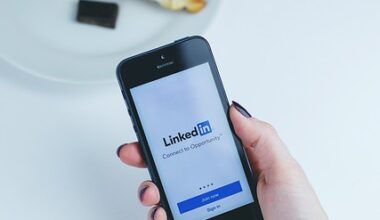In the fast-paced world of professional networking, LinkedIn stands tall as the go-to platform for connecting professionals, sharing insights, and exploring career opportunities. With over 740 million users globally, LinkedIn offers a unique space for individuals and businesses to establish their digital presence. One metric that holds immense significance in the LinkedIn ecosystem is “unique impressions.”
In this article, we will delve into the concept of unique impressions on LinkedIn, understand its significance, and explore how it can benefit individuals and businesses alike.
Firstly, it is essential to understand what unique impressions mean in the context of LinkedIn. When someone views your profile, engages with your content, or interacts with you on the platform, they form an impression of you and your professional brand. Unique impressions on LinkedIn refer to the distinctive and memorable experiences that individuals have when they encounter your presence on LinkedIn. These impressions are crucial as they shape perceptions, influence decisions, and contribute to building your professional reputation.
Understanding Unique Impressions
In simple terms, unique impressions on LinkedIn refer to the number of individuals who have viewed your content, profile, or posts during a specific period. Unlike total impressions, which count each view, including multiple views from the same person, unique impressions give you a more accurate measure of the actual number of distinct individuals who have engaged with your content.
The Significance of Unique Impressions
Reach and Visibility
Unique impressions directly reflect the extent to which your content is reaching a broader audience. By increasing unique impressions, you expand your visibility within your professional network and beyond, enabling you to connect with like-minded professionals, potential employers, clients, or partners.
Brand Building
Consistently generating high unique impressions establishes your personal or company brand as a thought leader in your industry. As more professionals view your content, you gain credibility and trust, enhancing your professional reputation.
Networking Opportunities
The larger your unique impression count, the higher the chances of attracting professionals interested in engaging with you. Unique impressions open doors to potential collaborations, job offers, speaking engagements, and mentorship opportunities.
How do I increase my unique impressions on LinkedIn?
- Compelling Content Creation: Share relevant and valuable content that resonates with your target audience. Craft engaging articles, thought-provoking posts, and visually appealing images or videos. Utilize storytelling techniques to capture attention and encourage meaningful interactions.
- Optimize Your Profile: Enhance your LinkedIn profile to reflect your expertise, achievements, and aspirations. Use keywords strategically in your headline, summary, and experience sections to improve discoverability. Include a professional headshot and a visually appealing background image to make a strong first impression.
- Consistent Engagement: Actively engage with your network by commenting on, liking, and sharing relevant posts. This helps build relationships and increases the likelihood of reciprocated engagement, which can lead to increased unique impressions.
- Harness the Power of LinkedIn Groups: Join industry-specific groups and participate in discussions. Share insights, answer questions, and provide value to the group members. This not only increases your unique impressions but also positions you as an expert in your field.
- Leverage LinkedIn Analytics: Regularly analyze your LinkedIn analytics to gain insights into the performance of your content. Identify which types of posts generate higher unique impressions and tailor your content strategy accordingly.
- Collaborate and Cross-Promote: Collaborate with other LinkedIn influencers, professionals, or businesses in complementary industries. Cross-promote each other’s content or co-create valuable resources, expanding your reach to each other’s networks and increasing unique impressions.
So, how can you create unique impressions on LinkedIn?
Optimize your profile
Start by crafting a compelling and complete LinkedIn profile that reflects your personal brand. Use a professional profile picture, write a concise and engaging headline, and provide a comprehensive summary highlighting your skills, achievements, and aspirations. Incorporate relevant keywords to increase your visibility in search results and enhance your professional image.
Share valuable content
LinkedIn is a content-driven platform, and sharing valuable and insightful content is a great way to create unique impressions. Share articles, blog posts, industry news, or thought leadership pieces that showcase your expertise and provide value to your network. Engage in meaningful discussions by commenting on other people’s posts and offering your perspectives to establish yourself as a knowledgeable and respected professional.
Build meaningful connections
Networking is at the core of LinkedIn, and building genuine connections is key to making unique impressions. Connect with professionals in your industry, colleagues, mentors, and thought leaders whose work aligns with your interests. Personalize connection requests to demonstrate your genuine interest and explain how you can add value to their network. Actively engage with your connections by congratulating them on achievements, endorsing their skills, and offering support whenever possible.
Engage in groups and communities
LinkedIn groups provide a platform to connect with like-minded professionals and engage in niche discussions. Join groups relevant to your industry, interests, or career goals, and actively participate in conversations. Share your expertise, offer insights, and ask thoughtful questions to establish yourself as a valuable contributor. Engaging in groups helps you expand your network, learn from others, and make unique impressions within your professional community.
Leverage LinkedIn’s features
LinkedIn offers a range of features that can help you create unique impressions. Utilize the publishing platform to write long-form articles and demonstrate your expertise. Create and share engaging videos to showcase your personality and storytelling abilities. Share multimedia content such as infographics, presentations, or podcasts to add variety and capture attention. Take advantage of LinkedIn Live to host webinars or live Q&A sessions to connect with your audience in real-time.
Provide endorsements and recommendations
Endorsing the skills of your connections and providing thoughtful recommendations can significantly impact their professional reputation. By acknowledging their expertise and vouching for their abilities, you not only strengthen your professional relationships but also create a positive impression among your network. In turn, others may reciprocate these gestures and endorse or recommend you, further enhancing your unique impressions.
Be authentic and consistent
Authenticity is paramount on LinkedIn. Be true to yourself, maintain a consistent voice and tone, and let your personality shine through. Share your accomplishments, but also be transparent about your challenges and lessons learned. Engage in conversations genuinely, offer constructive feedback, and show appreciation for others’ contributions. Consistency in your content, engagement, and personal branding efforts helps build trust and credibility, leading to unique impressions that resonate with your network.
What is the difference between unique impressions and impressions?
In the realm of digital marketing and analytics, the terms “unique impressions” and “impressions” hold significant importance. When it comes to measuring the reach and impact of your content, understanding the difference between these two metrics is crucial. We will explore the distinction between unique impressions and impressions, highlighting their respective meanings and how they contribute to assessing the effectiveness of your online campaigns.
Impressions
Impressions represent the total number of times a particular piece of content is displayed or shown to users. It counts every instance of content being presented, regardless of whether it is viewed by the same person multiple times or by distinct individuals. In simple terms, impressions reflect the overall exposure or visibility of your content.
For example, if your post appears in the feed of 100 LinkedIn users, and each user views it twice, the total impressions would be 200. This metric provides a general understanding of how frequently your content has been seen across platforms.
Unique Impressions
On the other hand, unique impressions focus on the distinct number of individuals who have viewed your content. Unlike total impressions, unique impressions count each viewer only once, regardless of how many times they have seen the content. It measures the unique reach or unique audience size for a specific piece of content.
Continuing with the previous example, if the same post appeared in the feed of 100 LinkedIn users, but only 80 of them viewed it (some users may have scrolled past or not engaged with it), the unique impressions would be 80. Unique impressions provide a more accurate measure of the actual audience engagement with your content.
Significance and Applications
- Reach and Engagement: Impressions provide a broad overview of the exposure your content receives across platforms, indicating the potential size of your audience. Unique impressions, however, focus on the actual number of individuals who have interacted with your content, providing insights into the true engagement and interest it generates.
- Content Optimization: Analyzing the ratio between unique impressions and total impressions can help you identify the effectiveness of your targeting and content strategy. If the ratio is low, it suggests that your content may not be resonating with your target audience, prompting you to refine your approach to increase unique impressions.
- Campaign Evaluation: Impressions are commonly used to evaluate the success of advertising campaigns, as they measure the overall exposure of ads. Unique impressions, on the other hand, provide a clearer picture of how many unique individuals your ads have reached, helping assess the campaign’s impact on a specific audience.
- Media Buying and Pricing: Unique impressions are often used as a basis for media buying decisions and pricing models. Advertisers are interested in reaching a unique audience rather than exposing their content to the same individuals repeatedly. Unique impressions assist in understanding the true value and potential reach of ad placements.
The Difference in Significance
- Reach and Potential Audience Size: Impressions help gauge the potential size of your audience and the reach of your content. It reflects the total number of times your content has been displayed, including repeated views by the same individuals. On the other hand, unique impressions provide insights into the actual number of distinct individuals who have viewed your content, indicating the true reach of your content among LinkedIn users.
- Audience Engagement: While impressions give you an idea of the potential visibility of your content, unique impressions provide a more accurate measure of audience engagement. Unique impressions indicate the number of unique individuals who have been exposed to your content, allowing you to assess how effectively you are reaching and resonating with your target audience.
- Content Optimization: Analyzing both unique impressions and impressions can help you optimize your content strategy. While impressions indicate the potential for exposure, unique impressions offer insights into the effectiveness of your content in attracting and engaging a diverse audience. By comparing these metrics and analyzing other engagement metrics like likes, comments, and shares, you can refine your content strategy to create more compelling and relevant content that resonates with your target audience.
- Advertising Performance: For LinkedIn advertisers, impressions are crucial for assessing the overall visibility and reach of their ad campaigns. Unique impressions, on the other hand, provide a more precise measure of the unique individuals who have seen the ads, offering insights into the effectiveness of targeting and audience reach in advertising campaigns.
Do impression mean views?

Understanding Impressions: Impressions, in the context of LinkedIn, refer to the total number of times a piece of content is displayed on the platform. It includes every instance of your content being shown in a user’s feed or on a LinkedIn page. Impressions count both organic and paid instances of your content being displayed. This metric provides an overall measure of the potential visibility and exposure of your content.
Understanding Views: Views, on the other hand, represent the number of times your content has been seen by LinkedIn users. When a user actively clicks on your content and spends a certain amount of time consuming it, it is considered a view. Views indicate that users have engaged with your content, showing genuine interest and intent to consume it fully.
The Distinction between Impressions and Views
- Passive Exposure vs. Active Engagement: Impressions measure the number of times your content has been displayed, regardless of whether users have actively engaged with it or not. It includes instances where your content is visible on users’ screens, even if they scroll past it without interacting. Views, on the other hand, represent active engagement, indicating that users have actively clicked on your content and spent time consuming it.
- Reach vs. Consumption: Impressions provide insights into the potential reach of your content, reflecting the total number of times it has been displayed. Impressions count every instance, including repeated views by the same individuals. Views, on the other hand, focus on the actual consumption of your content. They indicate the number of times users have actively clicked on your content and spent time engaging with it.
- Visibility vs. Interest: Impressions serve as a measure of the potential visibility and exposure of your content, indicating the number of times it has been displayed to LinkedIn users. Views, on the other hand, signify users’ genuine interest and intent to consume your content. Views demonstrate that users have actively clicked on your content, suggesting a higher level of engagement and interest.
Finally on unique impressions on LinkedIn
Unique impressions play a vital role in measuring the impact of your content and engagement on LinkedIn. By focusing on increasing unique impressions, you can enhance your reach, visibility, and professional network. Utilize the strategies mentioned above to create compelling content, optimize your profile, engage consistently, leverage LinkedIn groups, analyze your analytics, and collaborate with others. Embrace the power of unique impressions on LinkedIn to unlock new opportunities, build your brand, and make a lasting impression in the professional world.






